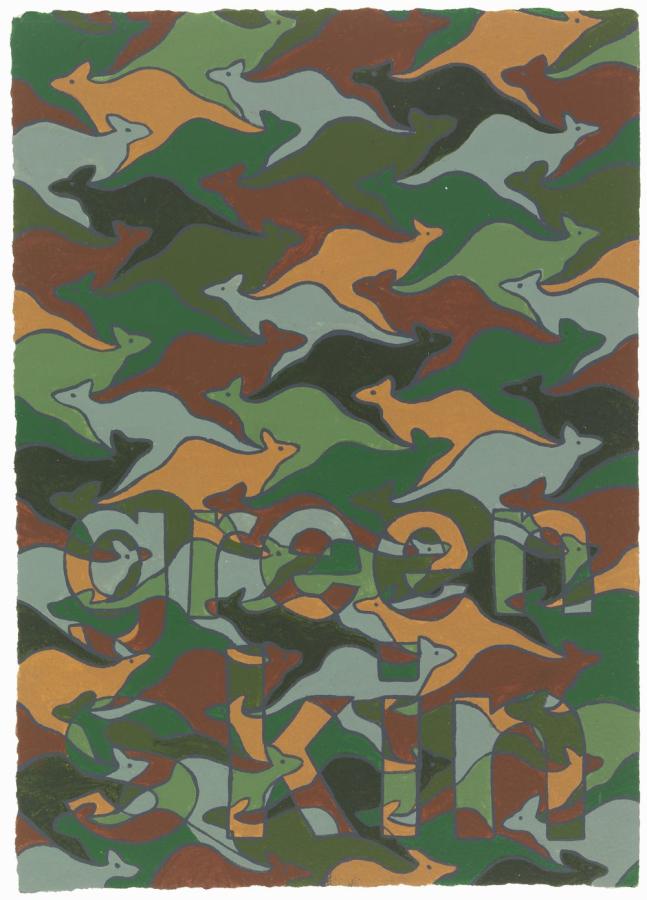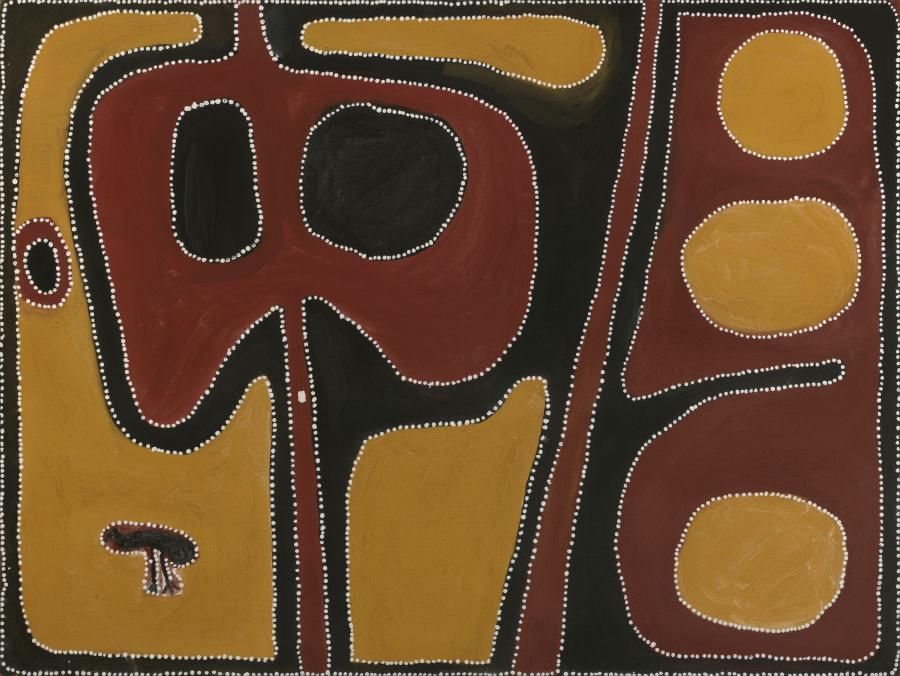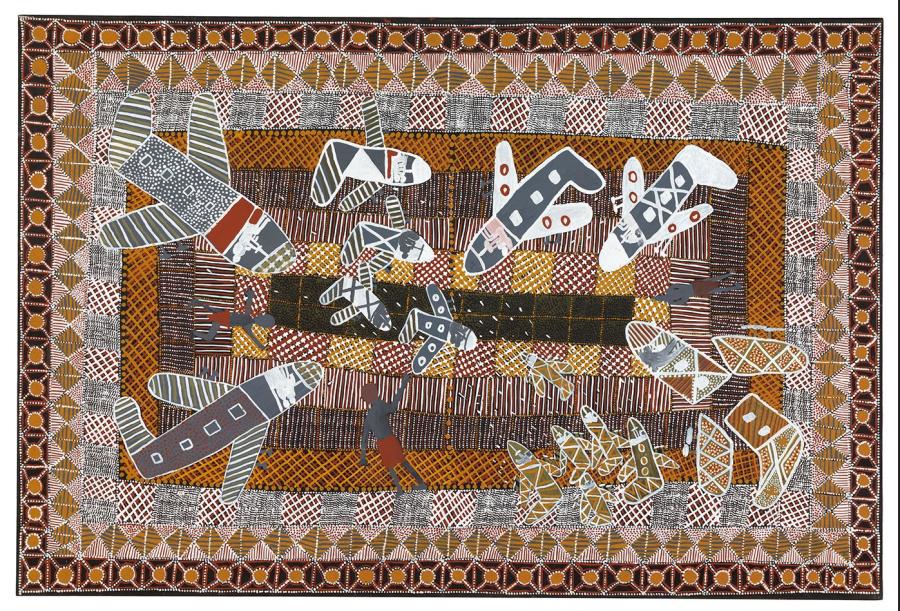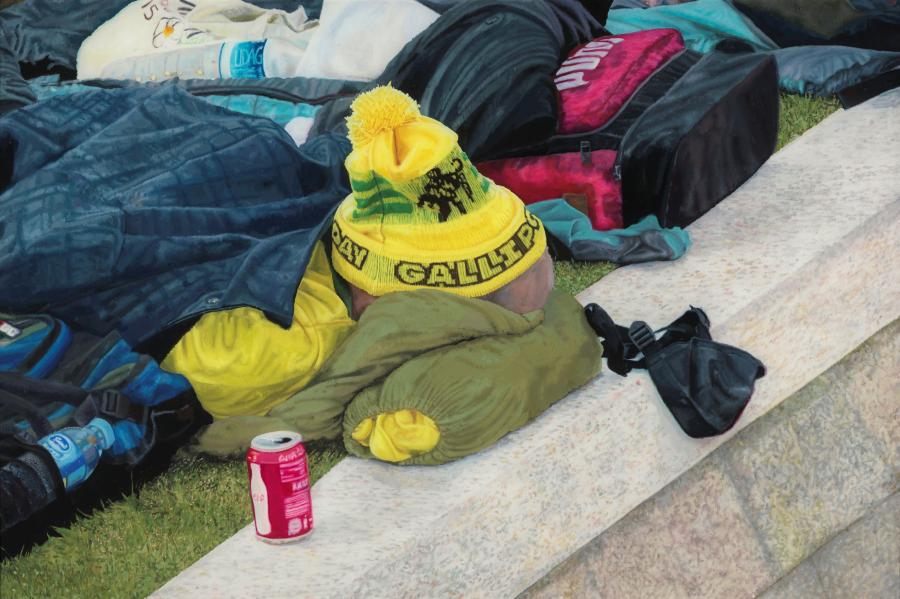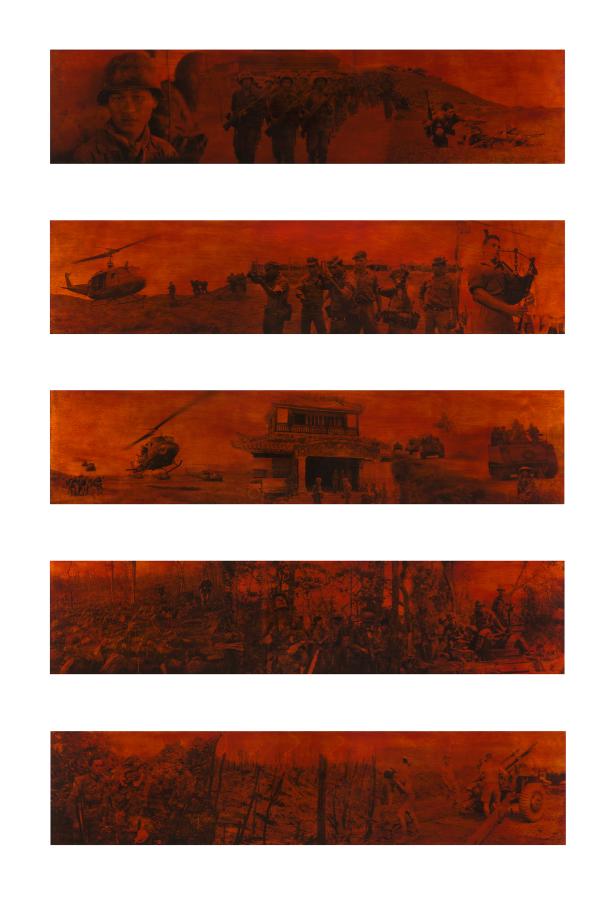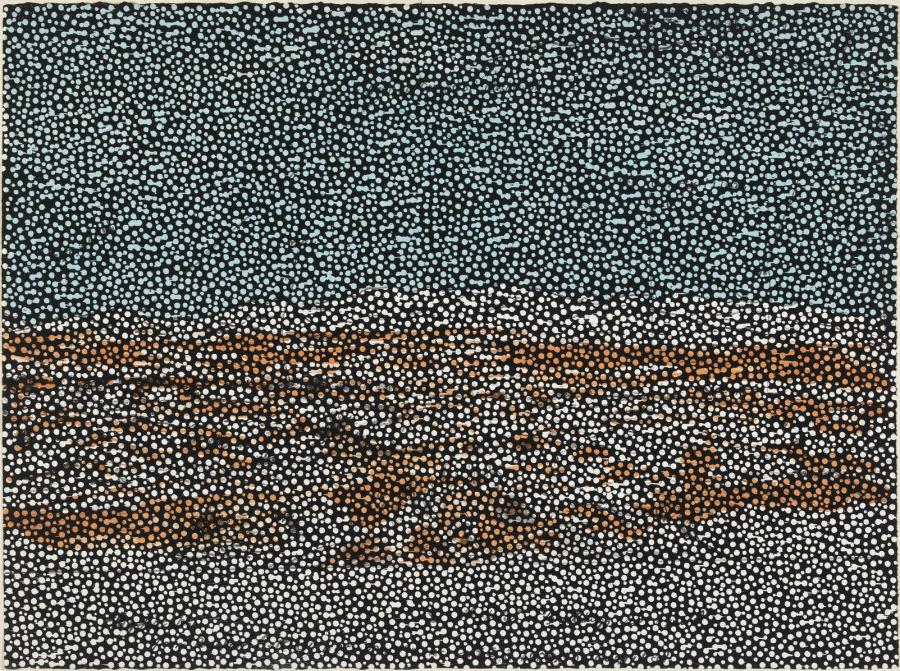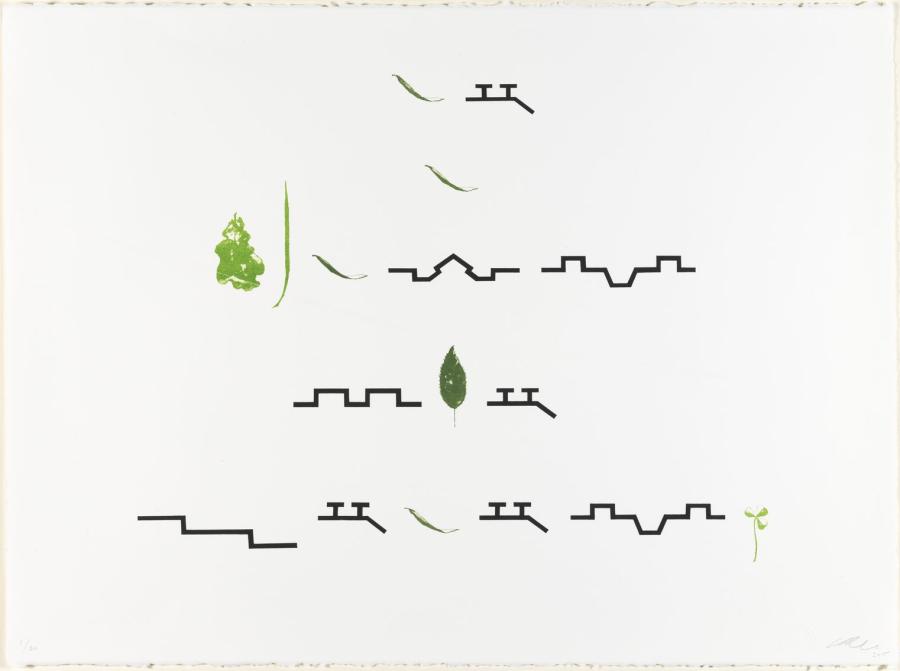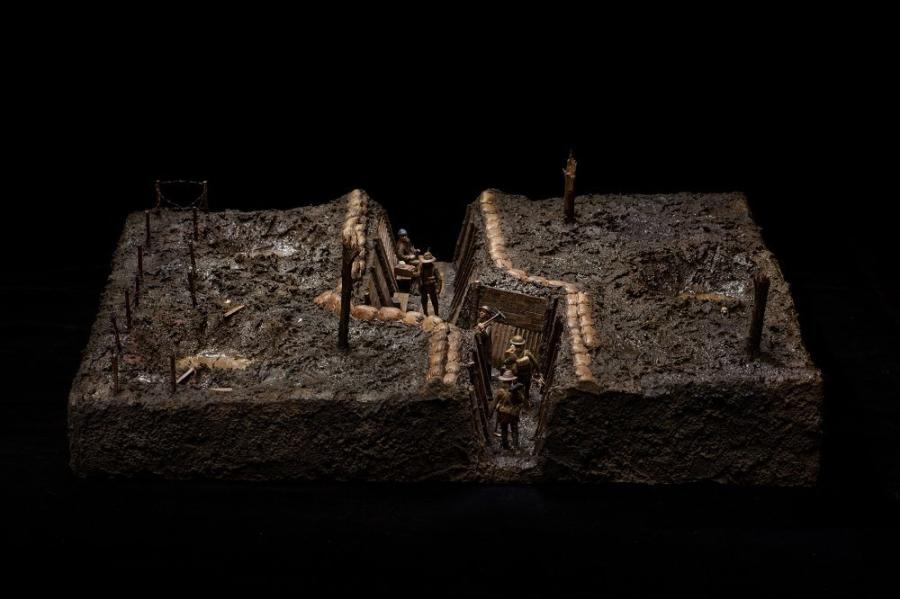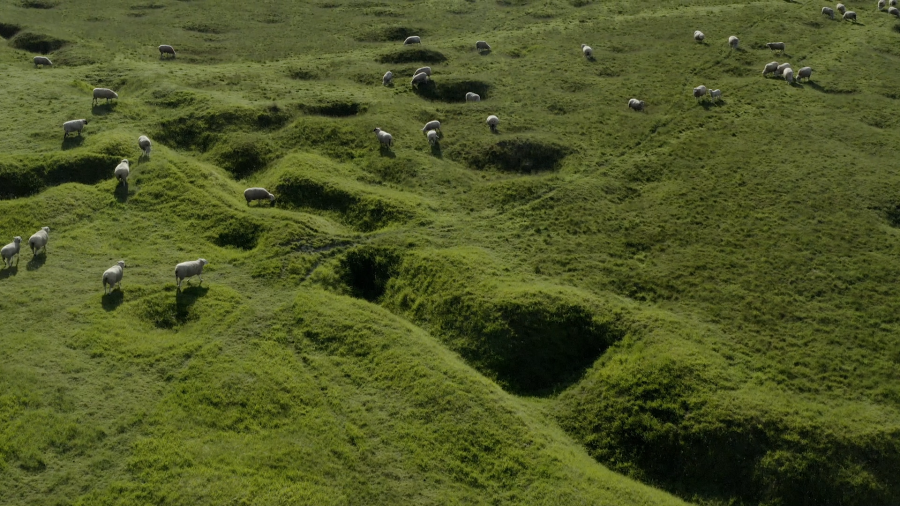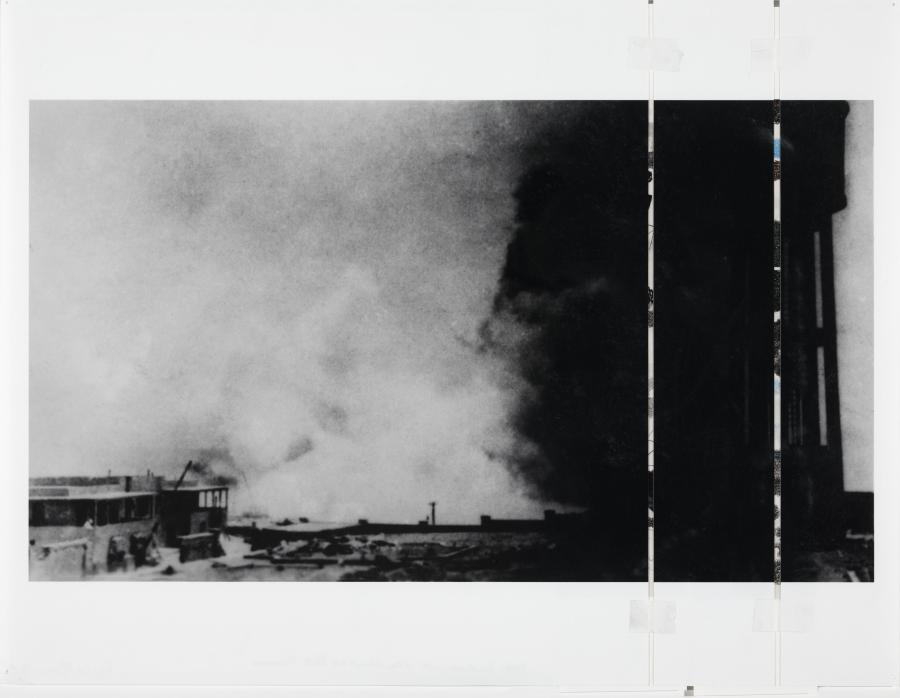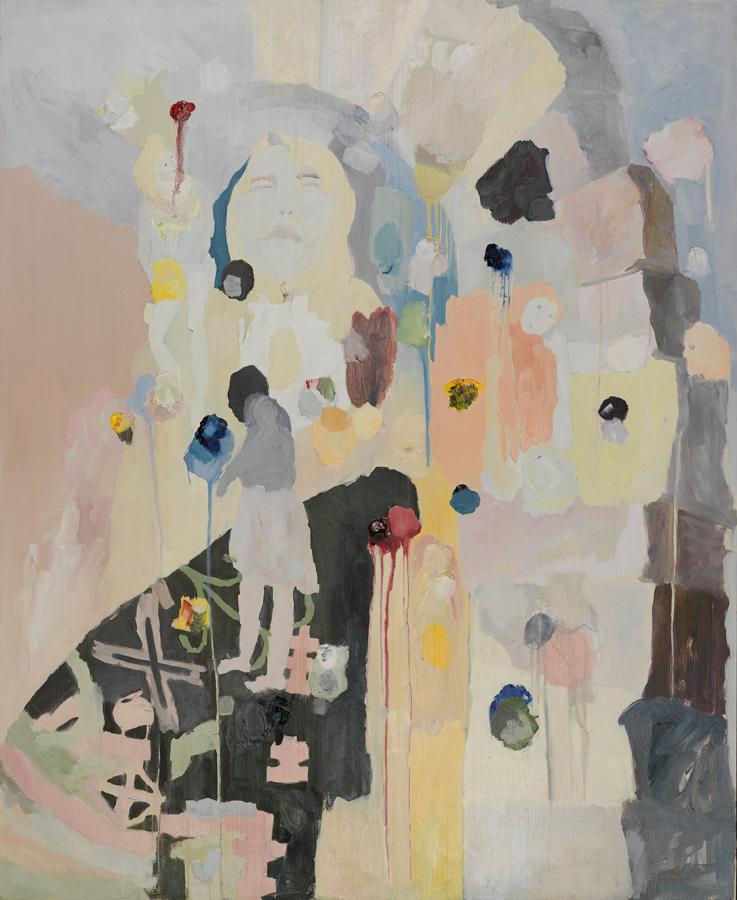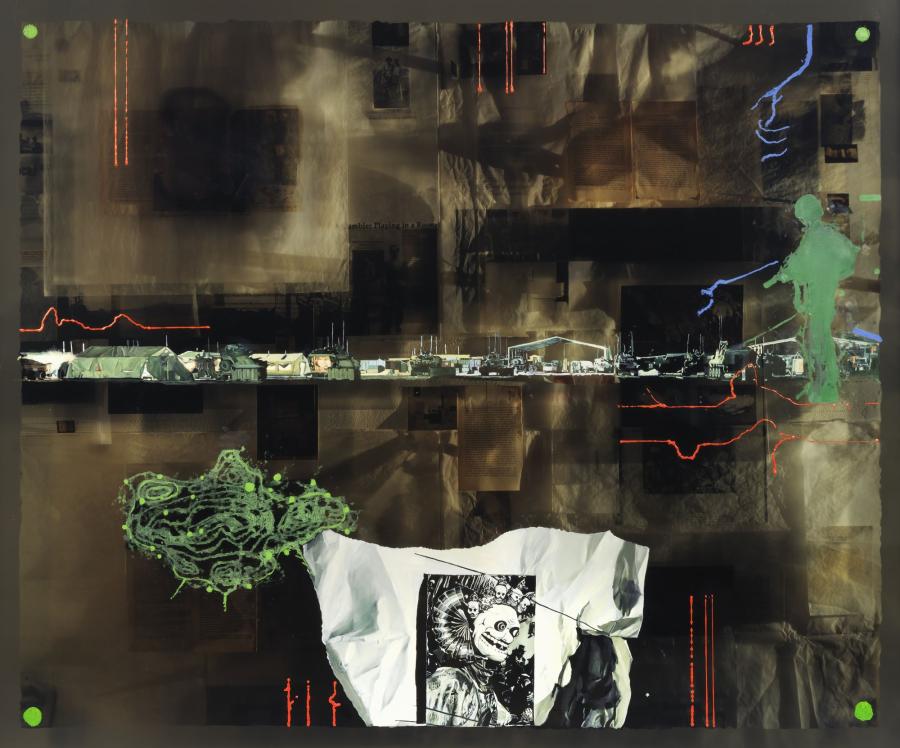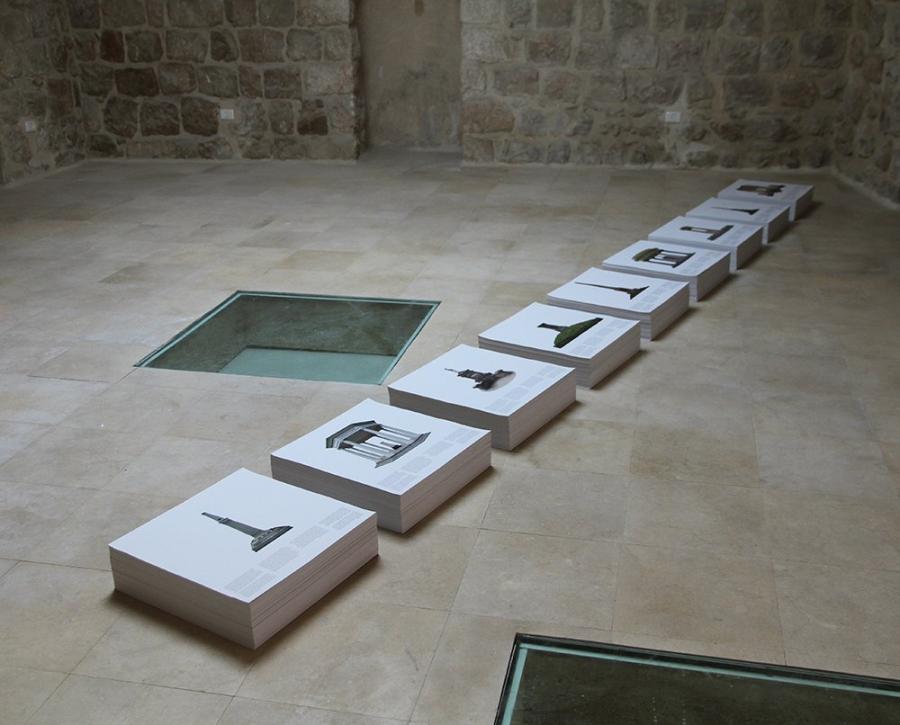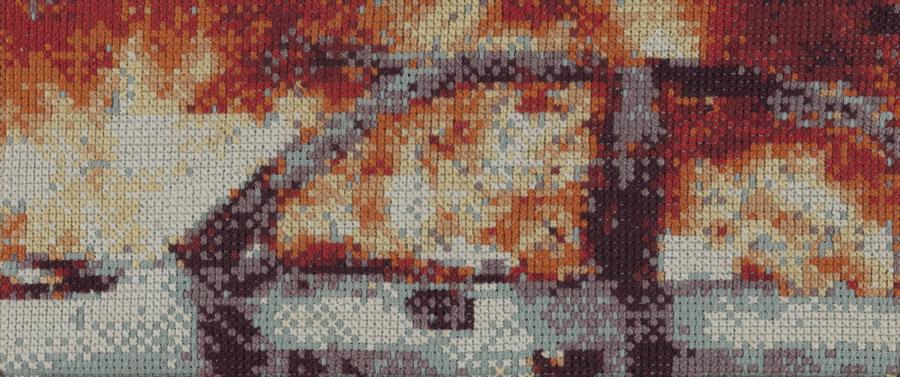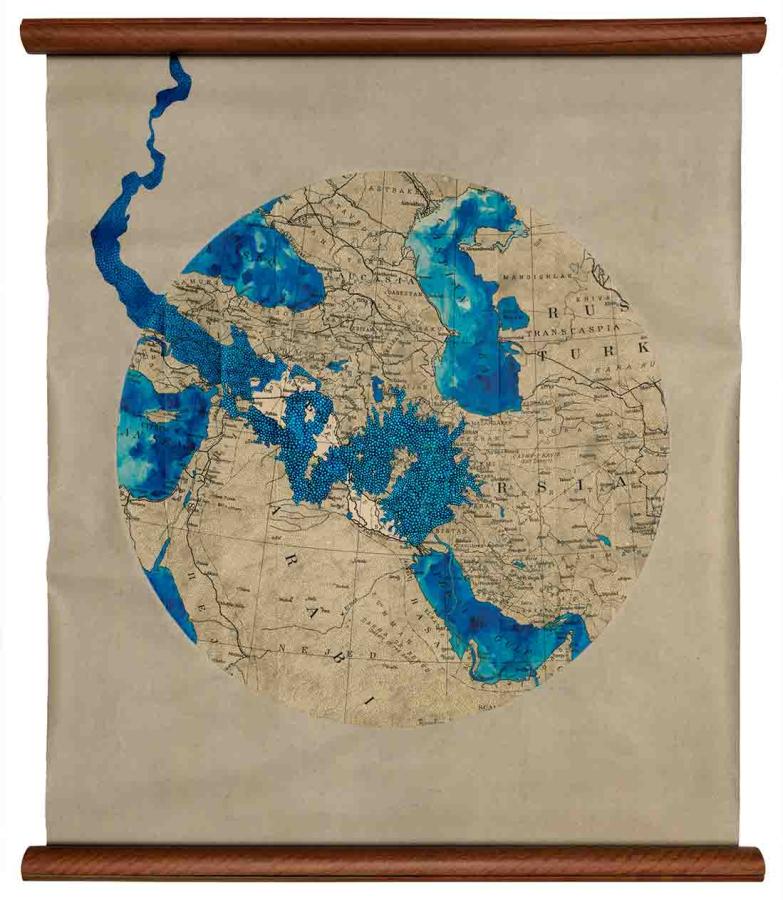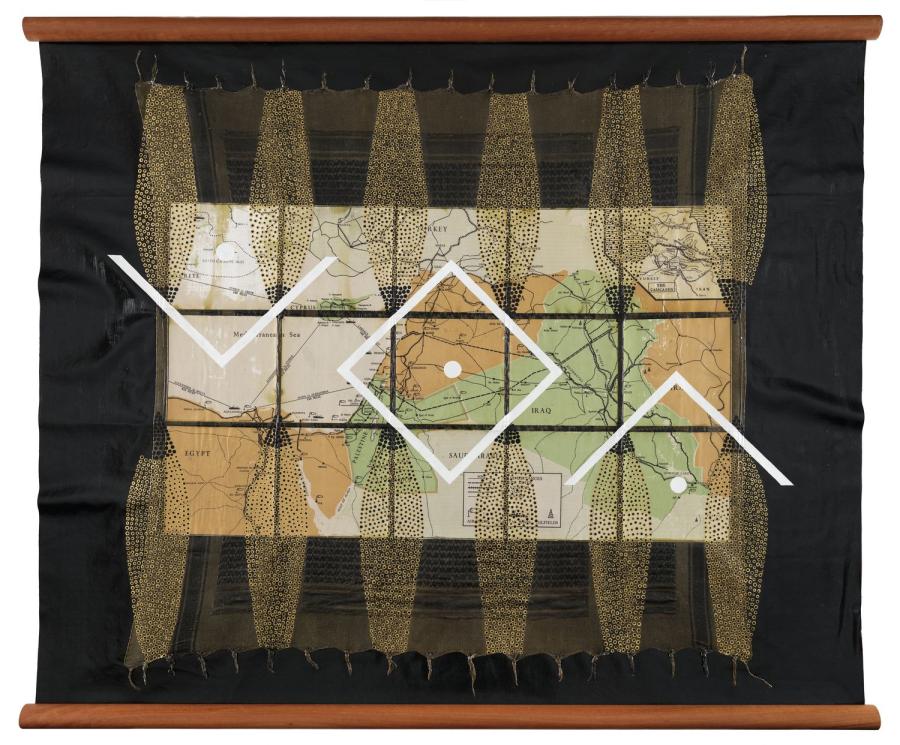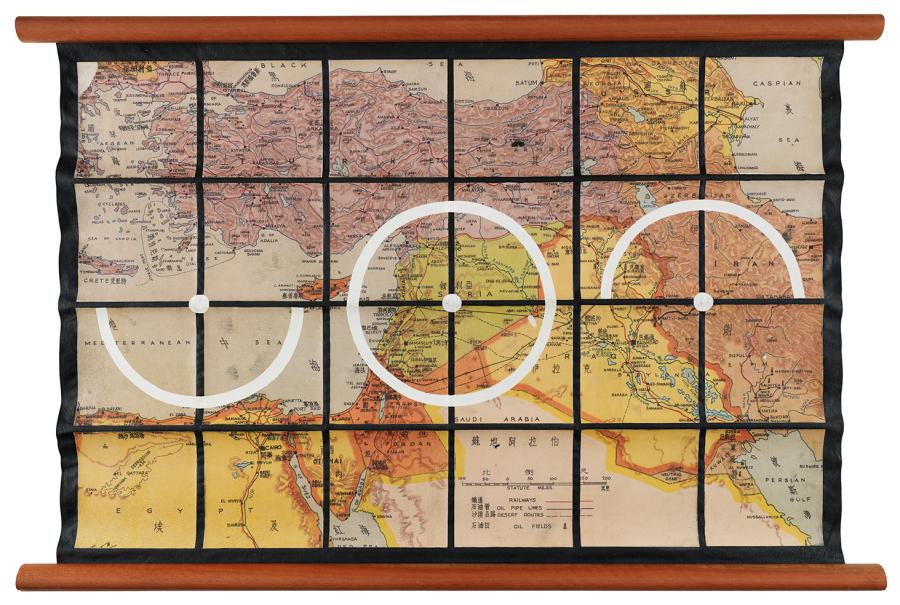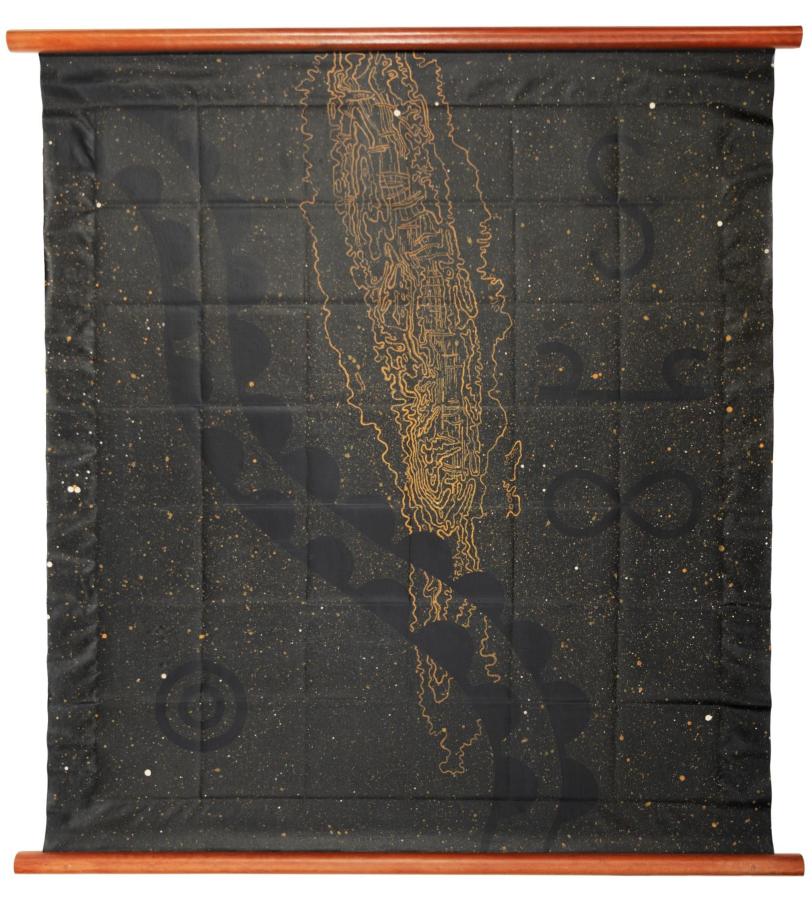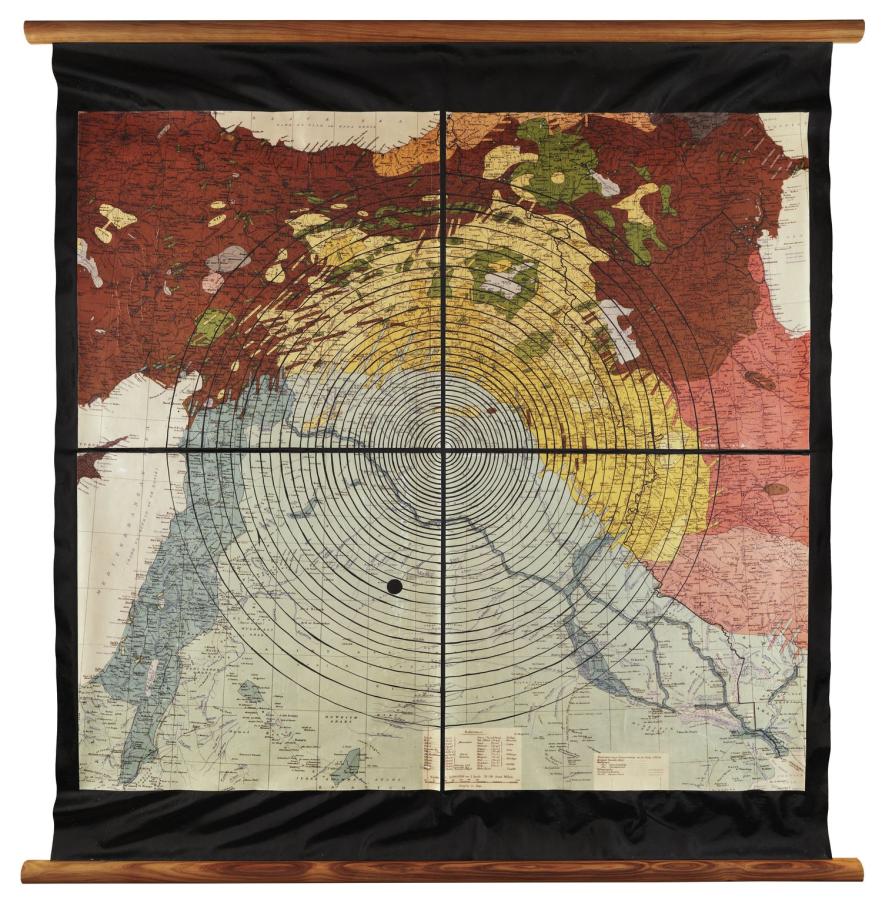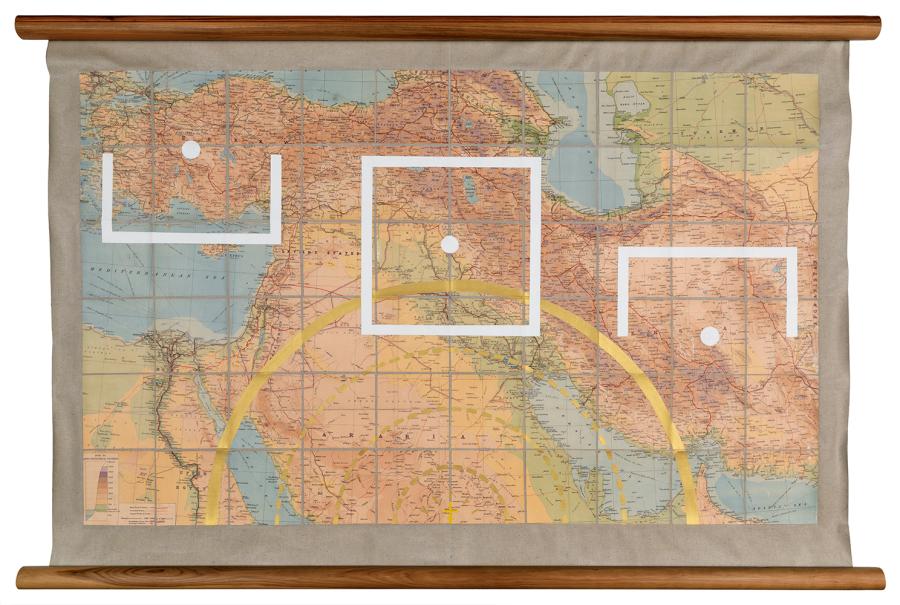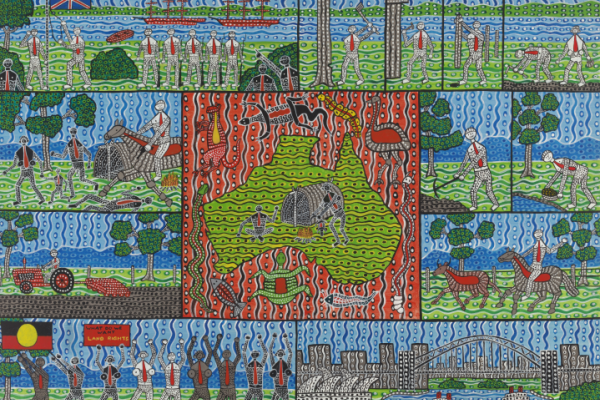Art in Conflict

Art in Conflict is a touring exhibition of contemporary art from the collection of the Australian War Memorial. Three major bodies of work debut in this exhibition: two recent official war art commissions – Susan Norrie (Iraq, 2016) and Megan Cope (Middle East, 2017) – and a landmark commemorative work by Angelica Mesiti. The exhibition will tour nationally until 2026, before its display in the Australian War Memorial’s new galleries.
A showcase of diverse responses to war, the exhibition includes more than 70 paintings, drawings, films, prints, photography and sculptures. Leading Australian artists are represented such as Khadim Ali, Rushdi Anwar, eX de Medici, Denise Green, Richard Lewer, Mike Parr and Ben Quilty. Aboriginal and Torres Strait Islander art, a collection priority for the Memorial in recent years, is featured, with works by Tony Albert, Paddy Bedford, Robert Campbell Jr, Michael Cook, Shirley Macnamara and Betty Muffler.
Contemporary artists’ responses to conflict bring to light untold stories, reveal neglected histories and deepen our understanding of Australia’s experience of conflict, both past and present. Megan Cope reflected on the experience of being an official war artist:
"I’m really honoured to have my work at the Memorial. It certainly is a once-in-a-lifetime kind of experience. I never would have expected it, to be honest, so I hope that people like the work, and ask lots of questions, and think about our relationship with the Middle East."
Supported by research from an Australian Research Council (ARC) Linkage Project, the exhibition highlights how war art can lead us to consider different ways of thinking about current and recent conflicts, inviting us to consider perspectives we might not otherwise encounter.
This project has been assisted by the Australian Government's Visions of Australia program.
Tour dates
| Gallery | State | Start | Finish |
|---|---|---|---|
| Shepparton Art Museum | VIC | 26 March 2022 | 31 July 2022 |
| Ipswich Regional Gallery | QLD | 13 August 2022 | 23 October 2022 |
| Perc Tucker Regional Gallery | QLD | 03 March 2023 | 07 May 2023 |
| SH Ervin Gallery | NSW | 29 July 2023 | 10 September 2023 |
| Western Plains Cultural Centre | NSW | 4 November 2023 | 14 January 2024 |
| The Riddoch Arts & Cultural Centre | SA | 10 February 2024 | 01 April 2024 |
| Noosa Regional Gallery | QLD | 20 April 2024 | 09 June 2024 |
| Glasshouse Port Macquarie | NSW | 09 November 2024 | 02 February 2025 |
| Gosford Regional Gallery | NSW | 14 February 2025 | 30 March 2025 |
| Geraldton Regional Gallery | WA | 24 May 2025 | 10 August 2025 |
| Port Pirie Regional Gallery | SA | 02 May 2026 | 28 June 2026 |
Exhibition overview
Art and war compellingly intersect at the Australian War Memorial. This survey exhibition of contemporary work in the Memorial’s collection presents artists’ responses to recent conflicts and reflections on historical events.
War art invites us to encounter new perspectives and deepen our understanding of the complexity and consequences of war. The collection was founded to document the First World War, as interpreted by leading Australian artists, using traditional, figurative forms that then dominated Australian art.
The Memorial collection reflects the changes to art since that time. We are now acquiring more conceptually-driven art in increasingly diverse forms – including official war art and other commissions – that bears witness to ever-changing, technology-driven conflicts in an ever more globalised world.
A priority is to better represent the experiences of Aboriginal and Torres Strait Islander peoples. The original purpose of the Memorial itself guides the contemporary collection: that to truly commemorate war first requires us to understand it. The collection holds a unique history (and historiography) of Australians’ experiences of conflict seen through the eyes of artists.
The works in the exhibition are displayed in four themes that highlight the roles art can play in a commemorative museum. The fifth grouping presents the works by official war artist Megan Cope, as they relate to all four themes.
Recent conflict
An increasing number of works of art in the collection respond to conflicts in the post-9/11 world; these works include major commissions from official war artists deployed to witness first-hand the experiences of the Australian Defence Force (ADF). Official war artists are commissioned to ‘document, record and interpret’ what they observe, and they independently choose how to do this – the word ‘official’ refers to their status on deployment, not the art they make. In the past two decades, artists were deployed to the Middle East, Solomon Islands, Timor-Leste and Regional Force Surveillance in northern Australia.
The collection extends beyond official war art, with major commissions and acquisitions that provide different perspectives on conflict. They include interpretations of the Afghanistan war through Hazara iconography (Khadim Ali); interventions in military training software (Baden Pailthorpe); and a response to the atrocities Saddam Hussein inflicted on Kurdish people in Iraq (Rushdi Anwar). The Memorial collection holds a unique history (and historiography) of Australians’ experiences of recent conflict seen through the eyes of artists.
More information
Khadim Ali, Transition/evacuation, 2015
Simon Gende, Plane crash into the Twin Towers on September 11, 2001, 2012
Lyndell Brown, History painting: market, Tarin Kowt, Uruzgan province, Afghanistan, c. 2008
Susan Norrie, still from Spheres of Influence, 2016-19
eX de Medici, Bullpup, 2009
Rushdi Anwar, Past in the present, 2012
Aboriginal and Torres Strait Islander Art
Over the past decade Aboriginal and Torres Strait Islander art has profoundly changed the Memorial’s art collection. These acquisitions were initially focused on works representing Indigenous peoples’ service in the ADF, and the locations of significant military events, such as the bombing of Darwin in the Second World War. A landmark was the 2017 collaboration with 19 tjilpies (elders) from the Anangu Pitjantjatjara Yankunytjatjara (APY) lands on a major new painting, now on permanent display in the Memorial, that recognises the long history of defending Country by Indigenous owners. Keith Stevens, a Nyapari traditional owner and artist, explained the importance of such commissions:
I’m living here because of the Country that we look after, the Tjukurpa [ancestral lore] that our ancestors left, that our fathers left for us. We are telling the world that we’ve got our Country, we look after our Country, and that is why we are strong.
Artists can express their own culture, language and traditions in their work; these acquisitions have enabled a better understanding of the Indigenous experience of conflict. As the Memorial worked with Aboriginal and Torres Strait Islander people, it became apparent that the history of frontier violence is inextricable from that of ADF service: both are understood culturally in relation to Country. To truly represent this cultural understanding, the collection needed works about frontier violence. Some of this developing collection of significant works is exhibited for the first time in Art in Conflict.
More information
Kapua Gutchen, Koskergiz Kaubu Kerkerr ge, 2018
Micheal Cook, Majority Rule (Memorial), 2013
Laurie Nona, Ngaw Babn ngu Ngayka [from my father to me], 2016
Tony Albert, Green Skin (Gangurru Camouflage), 2013
Paddy Bedford, Paddy Cooley (Quilty) Story / Emu Dreaming, 1998
Susan Wanji Wanji, Bombing of Darwin, 2016
Historical Reflections
There is a fascinating conversation in this collection between works looking back to the past and those in response to the present, revealing how the understanding of events changes over time as memories fade and history is written. The Memorial commissions major works of art on the occasion of significant anniversaries. These can provide invaluable new perspectives on history, such as Dacchi Dang’s landmark works exploring Vietnamese Australians’ and ADF veterans’ experience of serving alongside one another in Vietnam.
Numerous powerful works of art were created in response to the centenary of the First World War, an important moment of reflection about how Australia understood itself. Australian artist David Jolly and Turkish artist Köken Ergun created strikingly different but compelling works in response to the centenary of the Gallipoli campaign. Ten artists (five each from Australia and New Zealand) were commissioned to create a print for the Anzac Centenary Print Portfolio to explore the war’s legacies. Richard Lewer responds to the Memorial’s iconic dioramas via the contemporary vernacular of war model makers. Debuting in Art in Conflict, Angelica Mesiti’s film is a poetic response to the scars on the landscape of the Western Front.
More information
David Jolly, Dreamer, 2015
Dacchi Dang, Brothers in Arms, 2016-17
Daniel Boyd, Untitled from the 'Anzac Centenary Print Portfolio', 2015
Sriwhana Spong, At a place not stated from the 'Anzac Centenary Print Portfolio', 2015
Richard Lewer, The mud, the flies, the cold, the rats, the lack of sleep, 2016
Angelica Mesiti, still from A hundred years, 2019-2020
Personal Encounters
There are two levels to an artwork, the formal and the emotional. If an individual artist draws on the experience of a trauma, and if others who experienced that trauma can respond to that artist’s work, and sense that their story is being told, the work becomes universal. - Denise Green, 2015
Personal stories help us to comprehend the scale of mass historical events. Contemporary artists use this to great effect, whether to express their own story or that of another, such as official war artist Ben Quilty’s influential portraits of soldiers, many suffering PTSD, in response to his deployment to Afghanistan. By contrast, Denise Green’s work explores intergenerational trauma within her family since her father’s Second World War service.
Jon Cattapan, Lyndell Brown and Charles Green collaborate to reflect on their experiences as official war artists and to explore global histories of conflict. Similarly, Karen Black, Tom Nicholson, Alex Selenitsch, and Claire Healy and Sean Cordeiro all create complex responses to the causes and consequences of war. These works bring powerful personal voices to the collection that help to deepen our understanding of war and service.
More information
Denise Green, RJG: Bombardment of the wharf at Piraeus (Variant), 2016
Karen Black, Gate of the Winds, 2014
Lyndell Brown, Charles Green, Jon Cattapan, War and Peace#14: The Fire Within, 2014
Ben Quilty, Air Commodore John Oddie, after Afghanistan, no.1, 2012
Tom Nicholson, Comparative Monument (Palestine), 2012
Claire Healy and Sean Cordeiro, Tapestry of Disaster, Fallujah, 2013
Megan Cope
The first Aboriginal artist to be deployed overseas as an official war artist, Quandamooka woman Megan Cope accompanied Defence units participating in Operation Accordion in 2017. Operation Accordion supported the ADF’s roles in the Middle East Region, including communications, transport and air support. This ideally suited Cope’s practice with its interrogations of maps to examine histories of place, especially historically contested lands.
A ten-hour flight in an RAAF KC-30 air transport tanker, that refuelled allied jets in mid-air, was the key moment of her deployment. Following the course of the Euphrates River and the borders of Syria, Iraq and Turkey, she was attuned to the region’s symbolic resonance in history, as well as seeing first-hand the locus for so much of the contemporary world’s globalised military challenges.
The resulting Flight or Fight series of seven works is layered symbolically and physically. Each combines a historical map of the region overlaid with the symbolic language that air force pilots use to navigate. Cope used timber from her Country, Minjerribah (North Stradbroke Island), to mount six works in the style of old schoolroom maps.
I really wanted the maps to have that weight and to reflect that time of when we are learning about the world … I’ve since been so challenged by those sorts of maps and that knowledge that was prescribed onto those maps and world views. For me, it was really important to present the maps like that, and … attach some of my Country to it. - Megan Cope, 2019
This important body of work is a great example of what contemporary art brings to the Memorial: interpreting and recording current conflict; different cultural perspectives that deepen shared understandings of conflict; responding to the past through a contemporary gaze; and highly personal interpretations that can shed light on the universal.
More information
Megan Cope, Flight or Fight #1 Old Rivers, Deep Water (Lake Qadisiya & Lake Assad), 2018-2019
Megan Cope, Flight or Fight #2 The Near East – Bombs and Oil (Hostile Object), 2018–19
Megan Cope, Flight or Fight #3 Silk Road Extended (Friendly Object), 2018-2019
Megan Cope, Flight or Fight #7 The Near and Middle East with International Borders (Mt Sinjar), 2018–19
Megan Cope, Flight or Fight #5 The Near East – Bombs and Oil (Hostile Object), 2018–19
Megan Cope, Flight or Fight #4 A Golden Arc (Known Object), 2018-2019
Art in Conflict Education Kit
This resource designed for high school students explores contemporary artists' diverse responses to war.
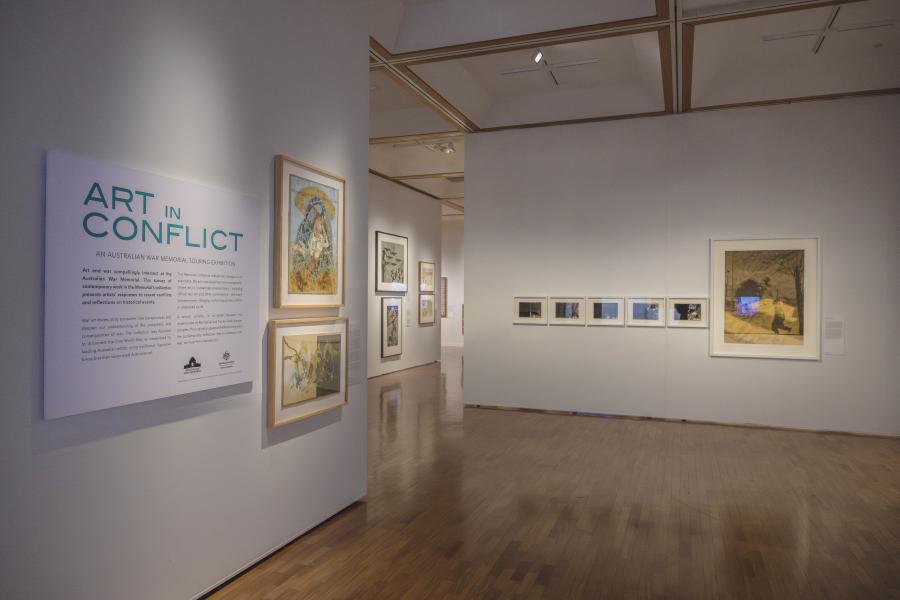
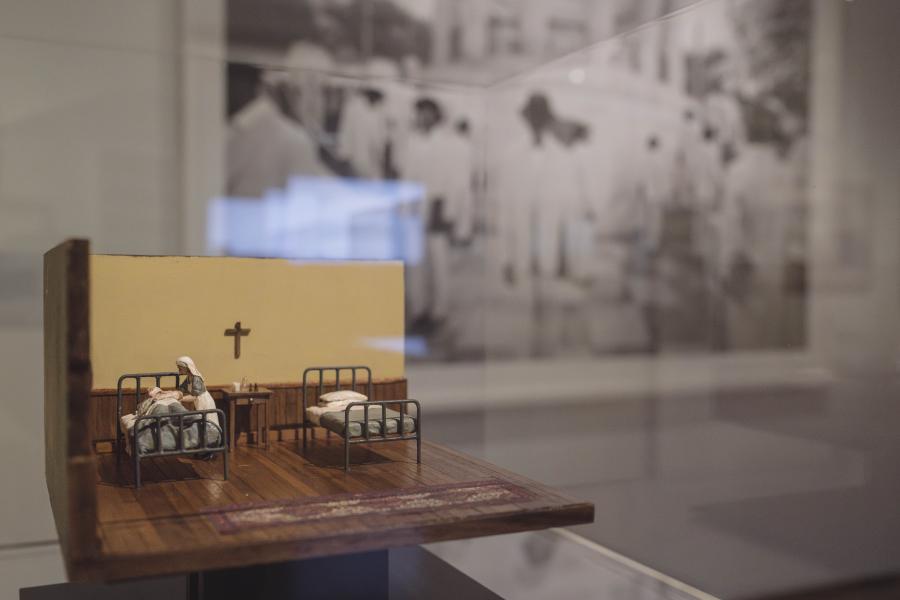
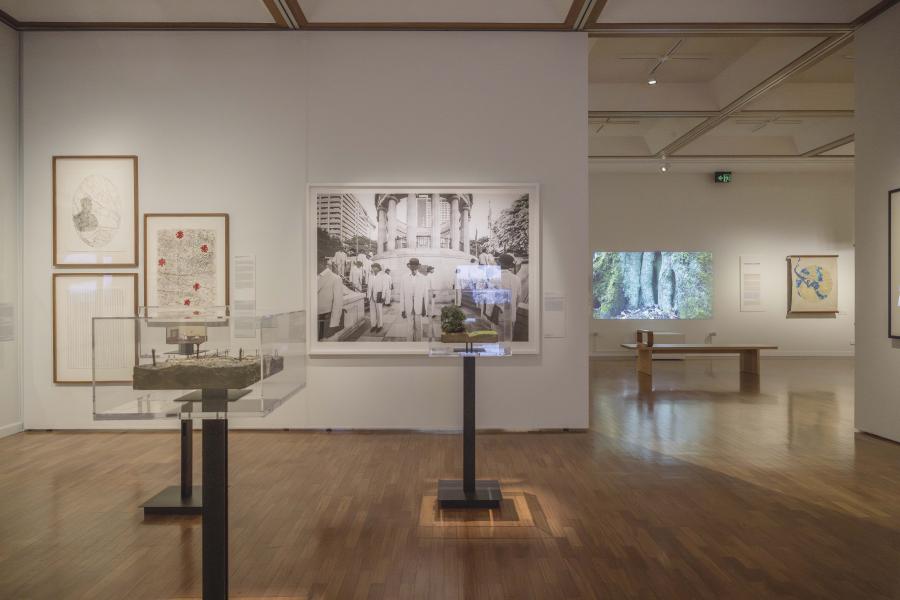
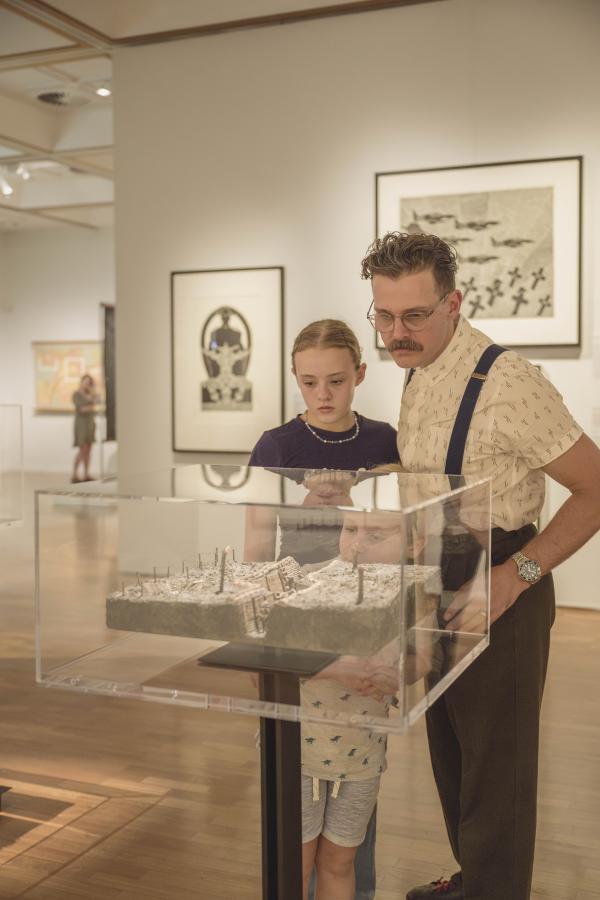


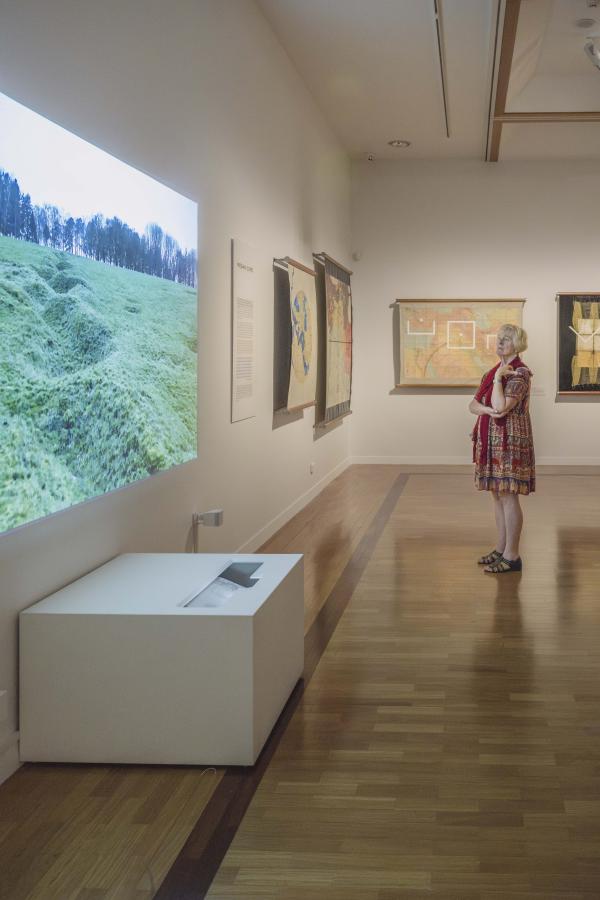
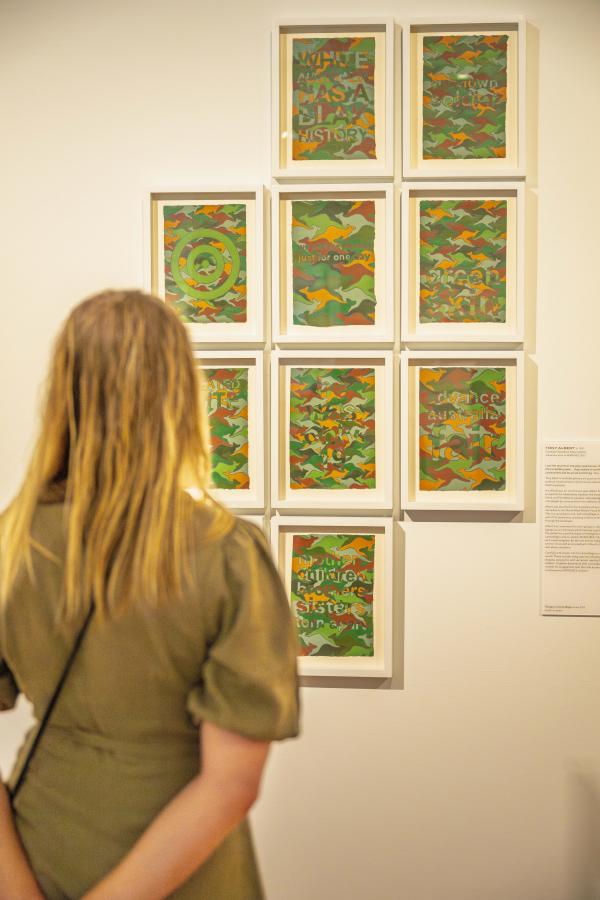

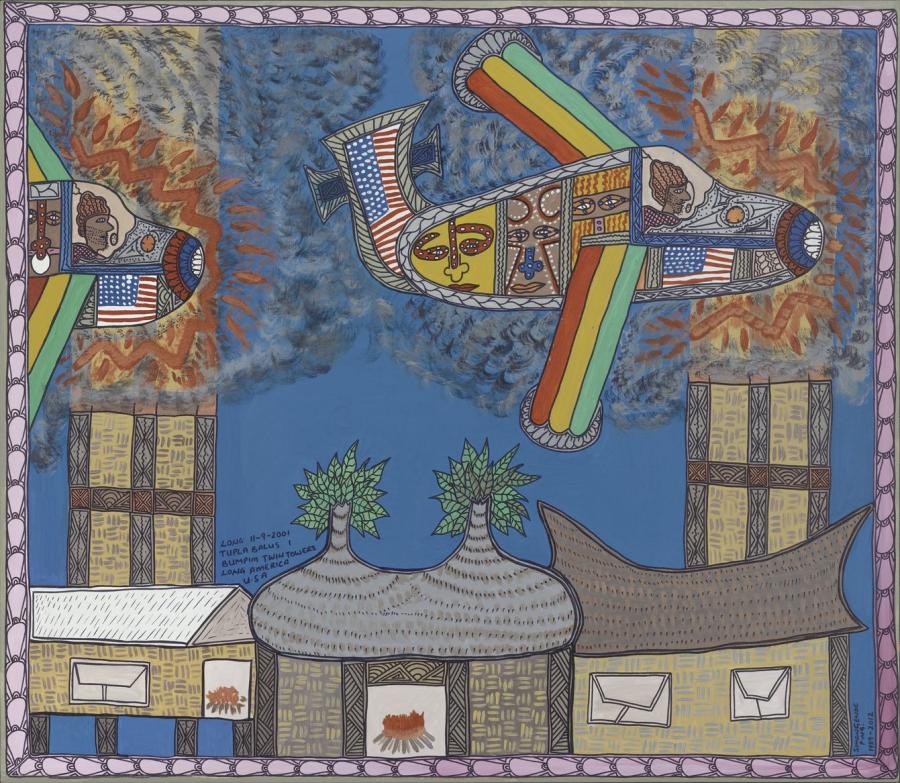
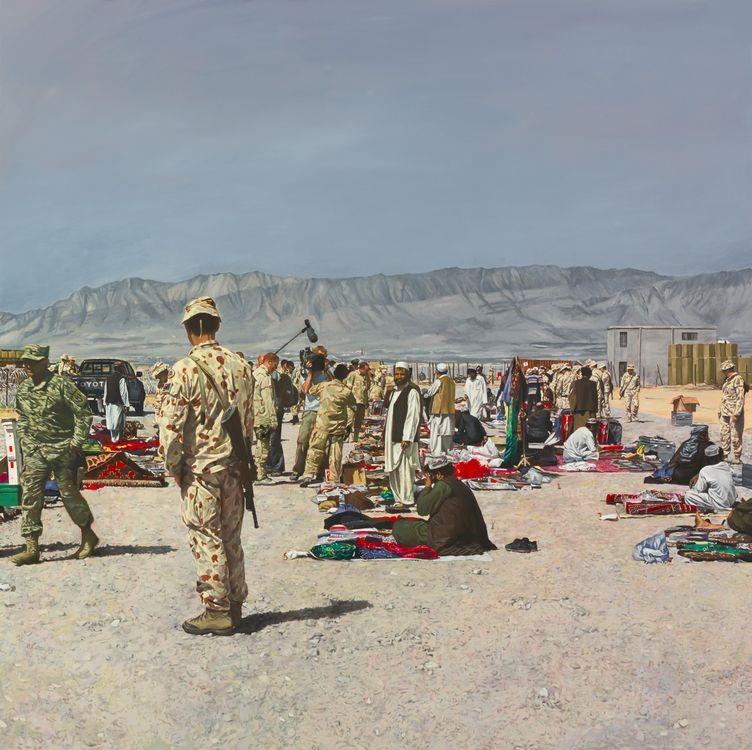
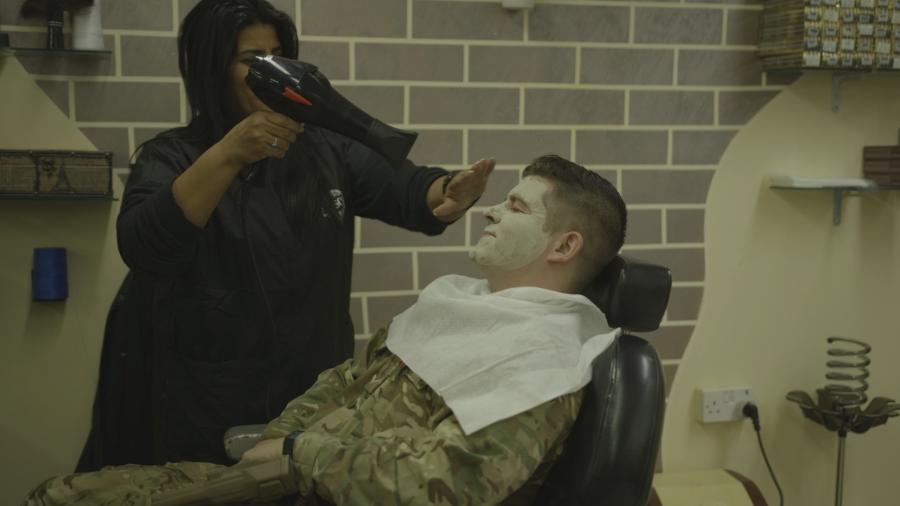

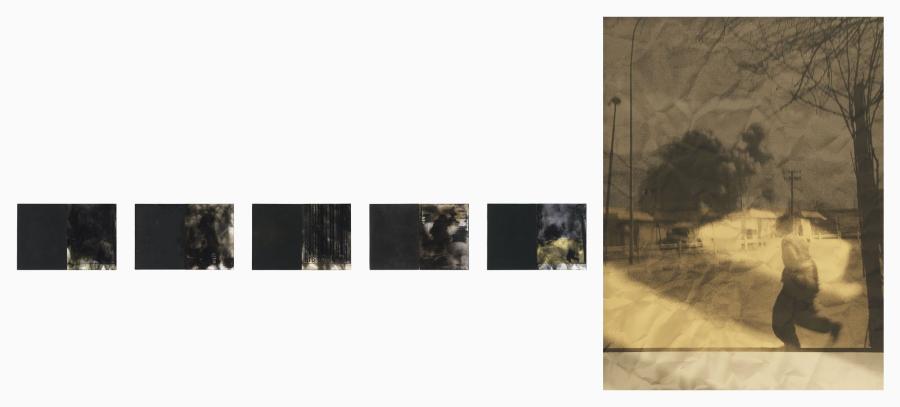

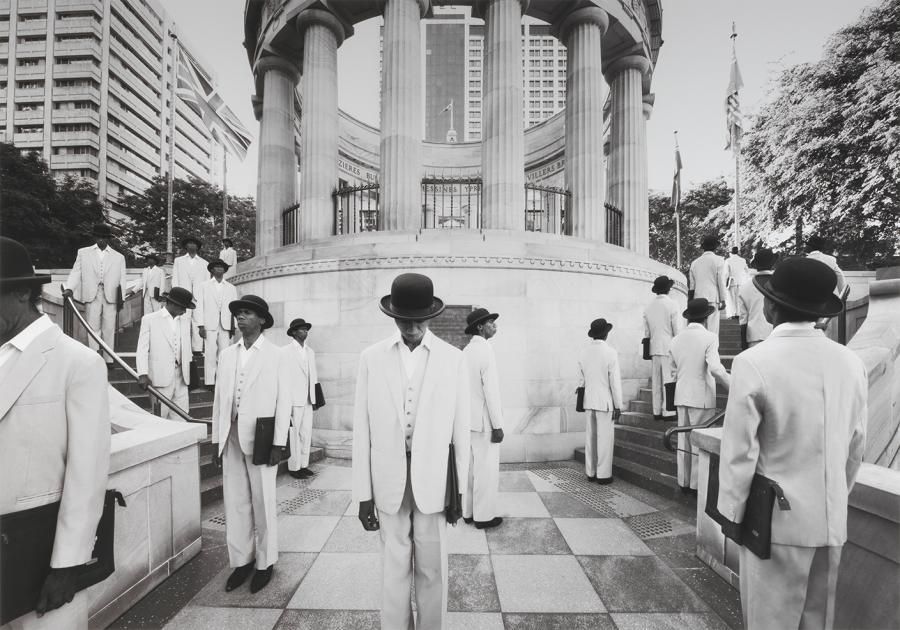
![Ngaw Babn ngu Ngayka [from my father to me]](https://www.awm.gov.au/sites/default/files/styles/main_content/public/198934/gridimage/awm2016_401_2-1.jpg?itok=Gwo6VhO_)
